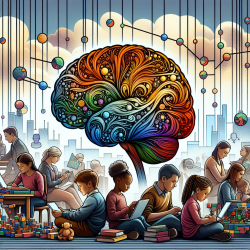The intricate relationship between socioeconomic resources (SER) and brain development in youth is a topic of growing interest among educators and mental health practitioners. Recent research highlights how SER influences the brain's functional architecture, offering insights that could transform educational practices and interventions.
The Impact of Socioeconomic Resources on Brain Development
According to a comprehensive study titled "Socioeconomic resources in youth are linked to divergent patterns of network integration and segregation across the brain’s transmodal axis," SER significantly affects the brain's intrinsic functional connectivity. This study utilized data from the Adolescent Brain Cognitive Development (ABCD) Study, which involved over 5,800 participants aged 9-10 years.
The findings reveal that higher SER levels are associated with greater integration of somatomotor and subcortical systems but greater segregation of default mode, orbitofrontal, and cerebellar systems. These patterns suggest that SER levels differentially configure the brain's functional architecture during critical developmental windows.
Graph Theory: A Tool for Understanding Brain Connectivity
The study employed graph theory to analyze the brain's network integration and segregation. By decomposing the brain into profiles of integration and segregation, researchers found that these profiles captured more than half of the multivariate association between SER and functional connectivity. This approach provides a more parsimonious and interpretable framework for understanding how SER influences brain development.
Implications for Practitioners
The insights from this research have profound implications for practitioners working with youth from diverse socioeconomic backgrounds. Here are some ways practitioners can apply these findings:
- Early Intervention: Identifying children at risk due to low SER can help target interventions that support cognitive and emotional development.
- Cognitive Development Programs: Tailoring educational programs to enhance network integration in lower-SER children could improve cognitive outcomes.
- Mental Health Support: Understanding the neural markers of environmental stress can guide mental health interventions to foster resilience.
A Call for Further Research
This study opens avenues for further research into how specific components of SER, such as parental education or neighborhood resources, uniquely impact brain development. Future studies could explore how interventions can be designed to mitigate the effects of low SER on brain connectivity.










